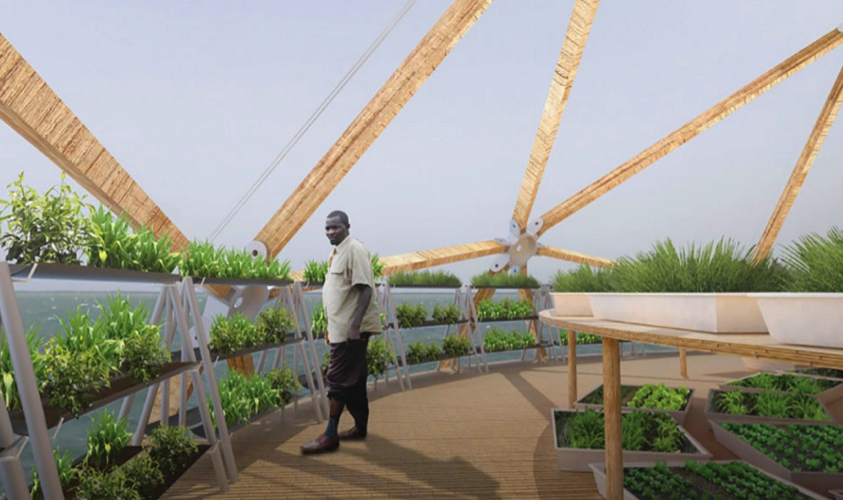Floating Bamboo Domes Provide Growing Space For Urban Farms
Jamaica’s agriculture sector suffers from many woes, including natural disasters that caused $14.4 billion in losses between 1994 and 2010, according to Dinesh Ram, the designer of this innovative floating bamboo dome concept. A noteworthy entrant in Inhabitat‘s recent Biodesign Competition, the Hope Waters Dome is designed to combat the twin dangers of rising sea levels and food scarcity in the water locked nation, and it could be built using locally available materials such as bamboo and plastic. This is a unique way of bringing urban farms to a well-populated area.
The bamboo geodesic dome is designed to provide multiple functions, including growing space and meeting space. The bamboo frame would rest on a platform made with recycled plastic bottles for buoyancy, addressing Jamaica’s burgeoning problem of overstuffed landfills. The upper floors are designed to operate as an “urban agriculture learning center” where food can be grown without risk of inundation from rising seas. The use of bamboo is also a great way to replace wood, concrete, and steel, as a building material resource for construction. Entire stalks of bamboo are used to create latticed edifices, or woven in strips to form wall-sized screens. The effect can be stunning, and also practical in parts of the world like Jamaica, where bamboo thrives.
“This icon of sustainable development is pre-fabricated, towed to a site, and can return the location back to its original state,” according to Ram. “Cost to build is roughly half compared to a traditional building of similar dimensions.”
Albeit just a concept at this point, the design recognizes that over the next few decades, we are expecting to see a one to two meter rise in sea levels. Given how much Jamaica, in particular, depends on its coastline for its economic well-being, now is the time to begin devising thoughtful solutions to build the country’s resilience.
Source: Inhabitat


